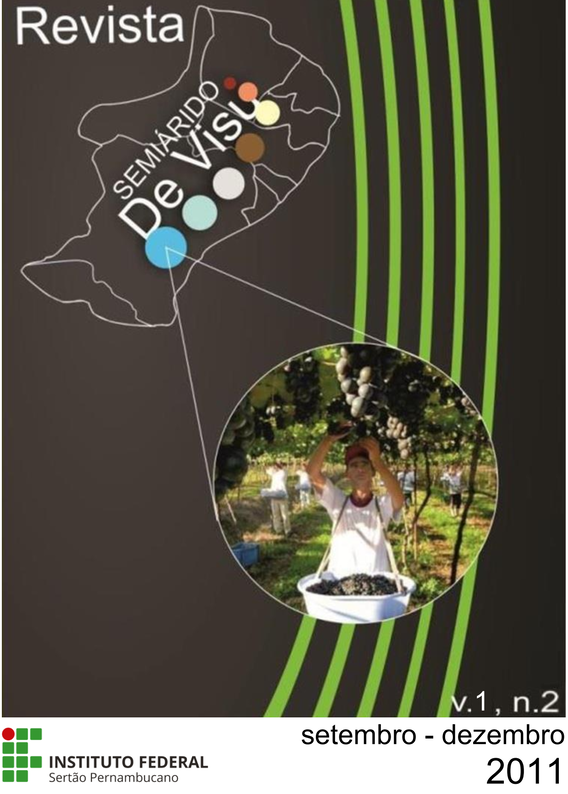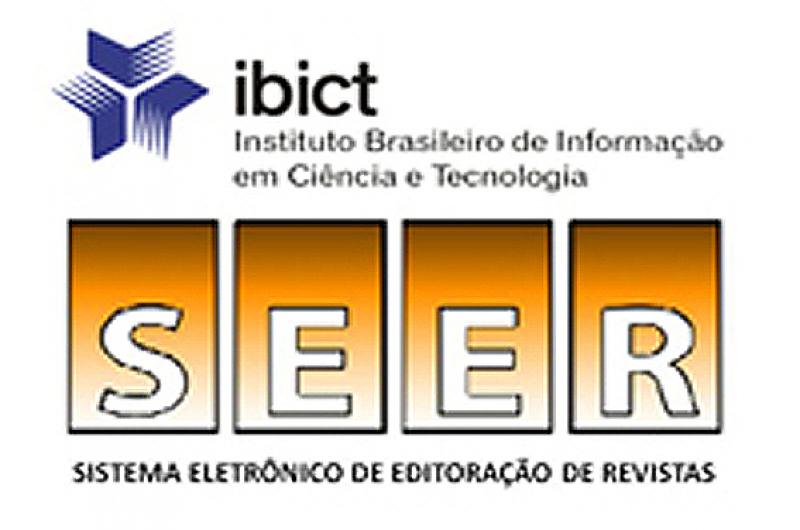Physical and chemical characterization of star fruits (Carambola averroes L.) produced in Petrolina, PE, Brazil
Visualizações: 336DOI:
https://doi.org/10.31416/rsdv.v1i2.201Keywords:
Exotic fruit, raw material, characterizationAbstract
The market for tropical fruits and exotic is growing strongly in recent years, both domestically, as in the external and C. averroes stands out as a profitable option for diversification and alternative crops to the fruit grower. The culture of carambola is native to Asia, in the Brazil is in frank expansion, with orchards, whose information on
performance, quality and chemical composition are scarce. This study aimed to characterize physical and chemical carambola produced in the valley of San Francisco. Was used as raw material carambola, from the city of Petrolina, PE, Brazil. The fruits were collected randomly, with good quality external characteristics, were in three maturity stages: mature, semi-ripe and green. For the physical characterization, we used a semi-analytical scale and a caliper, and the pulp extracted from these fruits was carried out the chemical through the determinations of pH, soluble solids (° Brix), total solids, ash, and total acidity acidity. The pulp of ripe fruit and made the semi-ripe soluble solids content of around 8,3 °Brix and 7,2° Brix, respectively, while the green fruit to the average value obtained was 5,5 °Brix. For the pulp of ripe fruit, semi-ripe and green, found average pH of 3.76, 3.62 and 3.59, the total solids content of 89.7, 90.3 and 92.8% the percentage of ash of 0.55, 0.43 and 0.37% and total acidity of about 0.35, 0.39 and 0.42% citric acid, respectively. The carambola produced in the valley of San Francisco showed up with a great potential for cultivation for both fresh consumption and for processing.
References
ARAÚJO, P.R.S.; MINAMI, K. Seleção de caramboleiras pelas características biométricas e físico químicas dos frutos. Scientia Agrícola, Campinas, v.58, n.1, p. 91-99, 2001.
ARAUJO, P. S. R. de. Seleção de caramboleira (Averroa carambola L.) relacionada ás características biométricas e físico-químicas dos frutos. 2000. 59f. Tese (Doutorado em Agronomia) - Escola Superior de Agricultura Luiz de Queiroz, Piracicaba.
BALBACH, A.; BOARIM, D.S.F. As frutas da medicina natural. 2. ed. Itaquaquecetuba: Vida Plena, 1992. 316p.
BALDINI, V.L.S.; DRAETA, I.S.; NOMURA, E.H. Avaliação bioquímica de carambola (Averrhoa carambola, L.). Coletânea do ITAL, Campinas, v.12, p.283-291, 1982.
BASTOS, D. C. A cultura da carambola. Revista Brasileira de Fruticultura. Vol. 26, n.2. Jaboticabal, 2004.
CAMPBELL, C.A.; KOCH, K.E. Sugar/acid composition and development of sweet and tart carambola fruit. Journal of the American Society Horticultural Science, Mount Vernon,
v.114, n.3, p.455-457, 1989.
FRANCO, G. Tabela de composição química de alimentos. 9a edição: São Paulo. Ed. Atheneu, 2008.
GUEDES, Z. B. L.; OLIVEIRA, M. N. de; HOLANDA, L. F. F. de.; GUIMARÃES, A. C. L.; FIGUEIREDO, R. W. de. Caracterização física, físico-química e química da carambola (Averroa carambola L.) In: CONGRESSO BRASILEIRO DE CIÊNCIA E TECNOLOGIA DE ALIMENTOS, 11, Recife, PE, 1988. Resumo...Recife, Sociedade Brasileira de Ciência e Tecnologia de Alimentos, 1988. p.112.
GOMES, P. Fruticultura Brasileira. 11a ed., Nobel, São Paulo, 1989. 446 p.
JORDÃO, P.R.; BONNAS, D.S. Aproveitamento industrial da carambola. Alimentos/Qualidade & Produtividade, São Paulo, n.7, p.28-29, 1995.
LENDERMAN, I.E.; BEZERRA, J.E.F.; ASSUNÇÃO, M. A. de; FREITAS, E.V. de. Characterization and selection of star fruit (Averrhoa carambola L.) genotypes in Pernambuco. Revista Brasileira de Fruticultura, Jaboticabal, v.22, n.1, p.31-35, 2000.
LENNOX, A.; RAGOONATH, J. Carambola and bilimbi. Fruits, Paris, v.45, n.5, p.497-501, 1990.
LUCICLÉIA, B. V. Revista Brasileira de Produtos Agroindustriais, Campina Grande, Especial, n.1, p.43-54, 2003.
NARAIN, N.; BORA, P. S.; HOLSCHUM, H. J.; VASCONCELOS, M. A. S.; SANTOS, E. M. G. Caracterização física dos frutos da caramboleira (Averroa carambola L.) oriundos do trópico semi-árido da Paraíba. In: CONGRESSO BRASILEIRO DE FRUTICULTURA.9., 1987, João Pessoa,PB: Resumos... João Pessoa: 1987. p. 17.
OLIVEIRA, M.E.B.; BASTOS, M.S.R.; FEI- TOSA, T.; BRANCO, M.A.A.C.; SILVA, M.G.G. Avaliação de parâmetros de qualidade físico-químicos de polpas congeladas de acerola, cajá e caju. Ciência e Tecnologia de Alimentos, Campinas, v. 19, n. 3, p. 326-332, set./dez, 1999.
POTTER, N. N. La ciência de los alimentos. México: Edutex, 1973. 749p.
SAÚCO, V.G. Possibilities of no-citrus tropical fruit in the Mediterranean. Acta Horticulturae, Hague, n.365, p.25-41, 1994.
SILVA, F. a S.; AZEVEDO, C.A.V. Versão do programa computacional Assistat para o sistema operacional Windows. Revista Brasileira de Produtos Agroindustriais. Campina Grande, v.4, n.1, p.71-78, 2002.
TAYLOR, J. E. EXOTICS. In: Seymour, G.B.; Taylor, J.E.; Tucker, G.A. Biochemistry of fruit ripening. Cambridge: Chapman & Hall, 1993. p.3-43.
TEIXEIRA, H.A.T.; DURIGAN, L.C.D.; SILVA, J.A.A. Caracterização pós-colheita de
seis cultivares de carambola (Averrhoa carambola L.). Revista Brasileira de Fruticultura, Jaboticabal, v.23, n.3, p.546-550, 2001.
WAGNER Jr., C. J.; BRYAN, W. L.; BERRY, R. E. Carambola selection for commercial production. Proceedings Florida State Horticulture Socity. v. 88, p. 466-469, 1975.
WILSON, C.W. Carambola and bilinbi. In: Nagy, S.; Shaw, P.E.; Wardowsky, F.S. Fruits of
tropical and subtropical origem: composition, properties and uses. Lake Alfredo,Florida: Florida Science Source, 1990. p.277-301.















